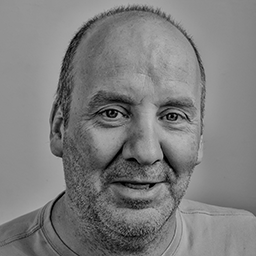Years after virtually every hospital and nearly every medical clinic implemented their first electronic health records, EHRs still haven’t fulfilled their full potential to support optimized physician workflow and clinical decision support. Craig Joseph, M.D., chief medical officer at the Madison, Wis.-based Nordic Consulting, has some perspectives on the situation, having practiced as a pediatrician for nearly a decade, and then worked for an EHR vendor. The Las Vegas-based Joseph spoke recently with Healthcare Innovation Editor-in-Chief Mark Hagland about the current moment in the development of EHRs, and how EHRs could be improved to better support physician practice. Below are excerpts from their recent interview.
How would you describe the current moment in terms of the ability of EHRs to truly support physician end-users in their daily work?
We’re moving towards EHRs becomingmore user-centered over time; I do think that the technology has gotten better and better. I was an Epic employee from 2005 through 2011, and the improvements made since then have been amazing. I co-wrote a book about user-centered design in healthcare; but there’s still room for improvement in applying user-centered design in the EHR. We’re still not leveraging those concepts to the extent we could. So understanding how humans think and act, and what’s important to them in the moment, and making the technology wrap around them, is a big improvement. And I’m not even talking about rocket science or advanced AI [artificial intelligence]; if we give people three choices and 80 percent of the time, they’re using choice B, then we should default to choice B.
And one of the great things about the EHR is that it has so much information. At the same time, physicians are feeling that they’re drowning in data. And the large language models are really, really good at summarizing vast amounts of data. So, summarizing the information for the ease of use of the doctor—those are the things the EHR has never been really good at; but the advances we’ve made in the last two years in terms of large language models, mean that we’ll better be able to serve up EHR usage for physicians.
Will physicians be much more involved in developmental work going forward?
Well, the good news has been the emergence of the clinical informatics specialty; I was lucky enough to get board-certified in it. And for physicians to understand the technology well enough to communicate with their fellow physicians and with the IT folks and developers, that’s important. My bachelor’s degree was in computer science; and it was uncommon to get a bachelor’s degree in computer science and then go to medical school; that was unusual back then, now, it’s not. And Judy Faulkner [the founder and CEO of Epic Systems] told me, there’s no way I’d hire you and have you write code; I have other people who can do that. What we need are strong clinical informaticians who understand the technology ell enough to talk with developers and who understand how clinicians’ minds work, and who are able to hop back and forth.
One of the problems, though, is that there are hospitals saying, why am I paying a doctor to configure this order set, when I can just hire an analyst? So some people are not understanding the value that clinical informaticists bring to improving care and decreasing burnout. But yes, we now have this subspecialty. We understand how doctors and nurses think; and we know when they say, I need this, they actually mean, I’m having trouble with this tools. And the informaticians know that.
One thing that is clear in this moment in the evolution of the healthcare system is that the irreducible thing of value is in the time of the clinician—the physician and nurse—because there is no substitute for their expertise and care delivery in the moment, correct?
I fully agree; often, the technology is not the problem, it’s the environment—regulatory, legal, compliance—in which we practice. I’m still board-certified, but haven’t practiced in years. But in my pediatric practice, never did I start a note without what the nurse or medical assistant had started. And when we were all on paper, I had medical assistants who would diagnose my patient, often, before I walked in the room, and I knew that, because there would be a croup handout. And I would walk and say, well, if Cheryl has diagnosed your kid, well, she’s only right 98 percent of the time. So my plea is for things like team-based care, where we allow everyone to work at the top of their license and training. So we acknowledge that physicians are getting way too many messages in their in baskets; sometimes, that’s because of technology, but people have made configuration decisions.
For example, I would often prescribe liquid amoxicillin for ear infections, but parents would sometimes leave the amoxicillin out overnight and then it became ineffective. And nurses and physician assistants knew to automatically call in another prescription for the rest of the course. And now, in many cases, the doctor is responsible for that decision, and that’s not a good use of their time.
What will the next few years look like in this area, as development moves forward?
I think we’ll see a lot of advancement around summarization; and hopefully, I’ll be able to query the database: is there a trend with the hemoglobin a1c results, for example? Show me the last 20. Those kinds of interactions are coming in the near future. And we have multiple data streams. We have genomics; meanwhile, people are moving to wearables. For example, I have an Apple watch. And the social determinants of health are another element.
In the future, all those elements will be available when the physician needs them, in order to prompt that the care plan for a patient might be different because the patient is living in a food desert, and we need a social work consult or referral to a food bank. We need to make it easy to do the right thing; so, cue up those orders and configure them the right way. Ambient listening is another element: documentation takes up such a significant portion of doctors’ and nurses’ time. And the ambient listening is already happening; in two or three years, it will be unusual to see a doctor typing during a patient visit.
What would your advice be to CIOs and CMIOs, per what they should be thinking about right now?
I would say, keep the humans at the center—both the patients and the clinicians and the operations folks. Make it easy for them to do what you need for them to do. Things become much more obvious when you’re focusing more on helping physicians to have high-quality time with patients—so, focus on the humans in the system: that will make a lot of decisions easier.







